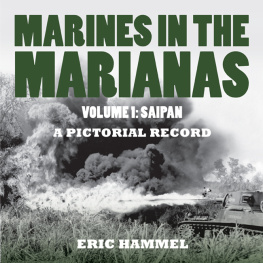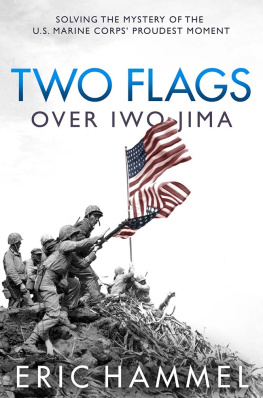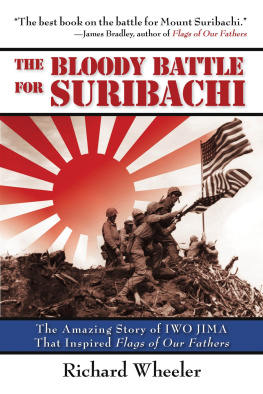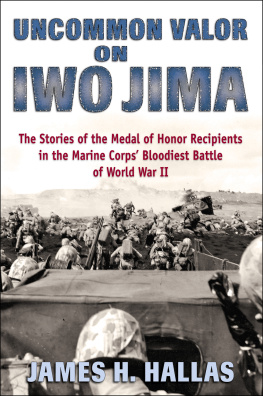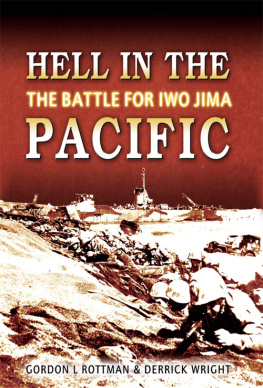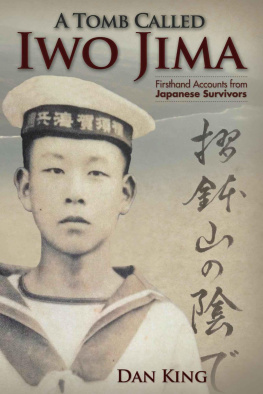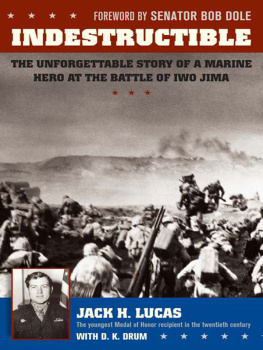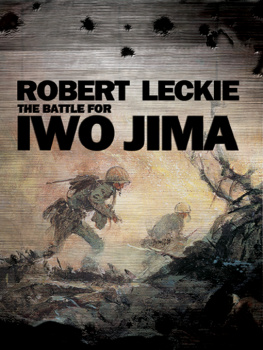Hammel - Marines on Iwo Jima, Volume 2
Here you can read online Hammel - Marines on Iwo Jima, Volume 2 full text of the book (entire story) in english for free. Download pdf and epub, get meaning, cover and reviews about this ebook. year: 2013, publisher: Pacifica Military History, genre: Non-fiction. Description of the work, (preface) as well as reviews are available. Best literature library LitArk.com created for fans of good reading and offers a wide selection of genres:
Romance novel
Science fiction
Adventure
Detective
Science
History
Home and family
Prose
Art
Politics
Computer
Non-fiction
Religion
Business
Children
Humor
Choose a favorite category and find really read worthwhile books. Enjoy immersion in the world of imagination, feel the emotions of the characters or learn something new for yourself, make an fascinating discovery.
- Book:Marines on Iwo Jima, Volume 2
- Author:
- Publisher:Pacifica Military History
- Genre:
- Year:2013
- Rating:3 / 5
- Favourites:Add to favourites
- Your mark:
- 60
- 1
- 2
- 3
- 4
- 5
Marines on Iwo Jima, Volume 2: summary, description and annotation
We offer to read an annotation, description, summary or preface (depends on what the author of the book "Marines on Iwo Jima, Volume 2" wrote himself). If you haven't found the necessary information about the book — write in the comments, we will try to find it.
Hammel: author's other books
Who wrote Marines on Iwo Jima, Volume 2? Find out the surname, the name of the author of the book and a list of all author's works by series.
Marines on Iwo Jima, Volume 2 — read online for free the complete book (whole text) full work
Below is the text of the book, divided by pages. System saving the place of the last page read, allows you to conveniently read the book "Marines on Iwo Jima, Volume 2" online for free, without having to search again every time where you left off. Put a bookmark, and you can go to the page where you finished reading at any time.
Font size:
Interval:
Bookmark:
I wish to thank the indomitable staff at the Still Pictures branch of the National Archives and Records Administration, especially the ever-helpful, ever-patient, ever-cheerful Theresa M. Roy and Donna Larker. So too my many old friends on the staff of the Marine Corps University Archive at Quantico, Virginia.
Major Norman Hatch, who in my mind at least is the dean of Marine combat photographers, has always made himself available to offer advice. Norm formed and personally oversaw the 5th Marine Division photographic section for Iwo Jima, so to a large degree this book is a product of his dedication, ingenuity, and bravery.
I also particularly thank my friend and fellow author John R. Bruning Jr. for sharing his photos, his hands-on photo-scanning assistance, his deep knowledge of digital scanning equipment and techniques, and his insights into best use of the National Archives Still Pictures collection.
Many thanks, also, to my old and dear friend Master Chief Hospital Corps-man Mark Hacala, for providing photos of the Navy Hospital Corps Medal of Honor recipients; and to Colonel Walt Ford of Leatherneck Magazine for his never-failing kindness as well as some valuable instant research; to Jon Dodd and the Marine Corps Association art staff for digging out and scanning the frontispiece.
Volume 1: 310 Photos
Volume 2: 357 Photos
Even in as bloody and bluntly violent a war as Americans encountered in the Pacific, Iwo Jima, the ultimate expression of death and mayhem, stands out. It was in a class by itself, a meatgrinder smashed by a blunt instrument at exceedingly high cost. Relying upon a purely attritional strategy of defend and die, Iwos Japanese commander oversaw the construction of thousands of concrete bunkers, pillboxes, blockhouses, and other fighting positions as well as multistory underground command centers and barracks, some as deep as seventy-five feet.
By D-day, February 19, 1945, most of these formidable defenses had been interconnected by eleven miles of underground passageways. Manning these positions were twenty-three thousand Japanese army and navy troops, many of them elite veterans of combat in the Pacific and China. Hundreds of mortars, artillery pieces, and rocket tubes had been painstakingly preregistered, allowing them to hit virtually any spot on the island with their first shot.
The defenders had bonded into a brotherhood born of the hardship they endured building bunkers and underground passageways in the extreme heat laced with sulfurous fumes of the volcanic island. In the words of one Japanese soldier, Iwo was an island of sulfur, no water, no sparrow, no swallow. Beyond that, each defender took an oath to fight to the death, to give no ground for any reason.
Following a seventy-four-day air and naval bombardment that the American high command believed had put the bulk of the Japanese defenders at least temporarily out of action, two veteran regiments of the 4th Marine Division alongside two regiments of the newly formed 5th Marine Divisioneight battalion landing teams in allled the way toward the island. Aircraft, battleships, cruisers, and destroyers pummeled ground targets near and far from the landing beaches. As the first wave of Marine-laden amphibian tractors climbed ashore, nearby gunboats fired hundreds of rockets to suppress enemy fire.
Nothing happened. There was no return fire. No Japanese fired at the ships offshore, nor at the oncoming waves of amphibian tractors, nor at the Marines, who were surprised to learn as their feet touched down that all of southern Iwo Jima was covered in a thick mantle of black volcanic ash that offered no purchase for their feet or their shovels.
Shortly, when the nearly eight thousand newly landed Marines had stopped along the shoreline to regroup, every Japanese gun and mortar within range opened fire on the exposed invaders. The gunfire did not die for thirty-four of the bloodiest days of the Pacific War.
Marines On Iwo Jima: A Photographic Record is an enhanced and expanded ebook edition of the hardcover and trade paperback book entitled Iwo Jima: Portrait of a Battle. The much larger book requires that it be presented in two volumes, each with more than three hundred photos.
I would like to start with a little story about me and The Flag Raising at Iwo JimaThe Photothat I have no doubt has been repeated again and again in other places and times over the sixty years since The Photos first publication. I told this story to Joe Rosenthal.
In 1955 I was a student in Mrs. Leschess fourth-grade class at Logan Elementary School in Philadelphia. I sat at the last desk in the second row, from which I could look straight out the door to the marble-wainscoted hallway. Opposite the door, and perfectly framed in it from my vantage point, was a colorized print of The Photo.
I was a good student, and Mrs. Lesches gave me a little slack; I could skylark out the door if she wasnt writing on the blackboard or speaking. This was never mentioned; I just picked up on it. So, for the year 1955, I looked out at The Photo every school day, and pretty soon I fell in love with it. I fell in love with my idea of it.
I grew up in the company of World War II vets. My own father was one.
I knew an Iwo Jima vet. And I was raised in an especially patriotic time.
It stayed with me. In time I found that I could write indeed, that I wanted to write. In more time I decided to write for my living. In pretty much no time I began to write military historyspecifically Pacific War history. And so here I am, more than fifty years and forty or fifty military history books later, relating a personal story that relates to a photo that relates that especially poignant and nearly magical long-ago moment on far-off Iwo Jima. The Photo wasnt the only thing that brought me to my vocation, and it wasnt the first. But I have no doubt that that school year of staring at it and imagining heroism crystallized all the other events of my youth that brought me here.
Eric Hammel
Northern California
Winter 2012
Bartley, Lieutenant Colonel Whitman S. Iwo Jima: Amphibious Epic. Washington, D.C.: Marine Corps Historical Branch, 1954.
Blakeney, Jane. Heroes: U.S. Marine Corps, 18611955. Blakeney Publishing, 1956.
Garand, George W., and Truman R. Strobridge. Western Pacific Operations. Vol. IV, History of U.S. Marine Corps Operations in World War II. Washington, D.C.: U.S. States Marine Corps, 1971.
Hammel, Eric. Air War Pacific: Chronology, Americas Air War Against Japan in East Asia and the Pacific, 19411945. Pacifica, Calif.: Pacifica Press, 1998.
. Pacific Warriors: The U.S. Marines in World War II, A Pictorial Tribute. St. Paul, Minn.: Zenith Press, 2005.
Hammel, Eric, and John E. Lane. Bloody Tarawa. Pacifica, Calif.: Pacifica Press, 1998.
Hough, Frank O., Verle E. Ludwig, and Henry I. Shaw Jr. Pearl Harbor to Guadalcanal. Vol. I, History of U.S. Marine Corps Operations in World War II. Washington, D.C.: U.S. Marine Corps, 1958.
Mondey, David. Concise Guide to American Aircraft of World War II. London: Temple Press, 1982.
. Concise Guide to Axis Aircraft of World War II. London: Temple Press, 1984.
Nalty, Bernard C. The Right to Fight: African-American Marines in World War II. Washington, D.C.: Marine Corps Historical Center, 1995.
Newcomb, Richard F. Iwo Jima. New York: Holt, Rinehart & Winston, 1965.
Olynyk, Frank J. USMC Credits for the Destruction of Enemy Aircraft in Air-to-Air Combat, World War 2. Aurora, Ohio: Frank J. Olynyk, 1981.
Ross, Bill D. Iwo Jima: Legacy of Valor. New York: Vanguard Press, 1985.
Font size:
Interval:
Bookmark:
Similar books «Marines on Iwo Jima, Volume 2»
Look at similar books to Marines on Iwo Jima, Volume 2. We have selected literature similar in name and meaning in the hope of providing readers with more options to find new, interesting, not yet read works.
Discussion, reviews of the book Marines on Iwo Jima, Volume 2 and just readers' own opinions. Leave your comments, write what you think about the work, its meaning or the main characters. Specify what exactly you liked and what you didn't like, and why you think so.

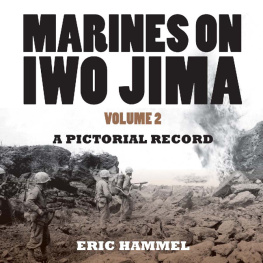

![Hammel - The artists guide to GIMP effects creative techniques for photographers, artists, and designers ; [covers GIMP 2.8]](/uploads/posts/book/138245/thumbs/hammel-the-artist-s-guide-to-gimp-effects.jpg)


